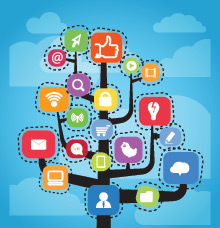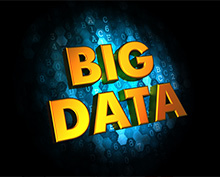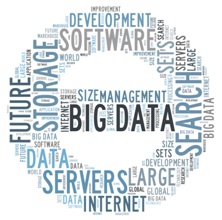Are you listening to the right voices?
Growth in the telecom industry is always at a staggering rate. Thanks to continuous rise in customer churn, high operational costs and average customer service, telecom companies are forever at the receiving end of all kinds of technological changes & customer expectations. However, this industry is sitting on a gold mine that only awaits proper digging. Big Data Analytics – a phenomena that the world is waking up to and trying to find ways to exploit – has been gaining grounds somewhere in the warehouses of every telecom business. This industry has been dealing with conventional data for years now, from tracking simple calls, billing details to complex Call Detail Records (CDR) or Event Detail Reports (EDR). Over the last three to five years with the advent of smart phones, faster and intelligent networks, proliferation of mobile applications and devices and technology convergence, there is a pressing need to convert these data- rich repositories into actionable insights that become a competitive advantage.
Access to data is not the challenge we need to look at in telecom. The success therefore remains in harnessing the data that is available at large. This can help them deliver better services to generate new streams of revenue, transform business operations to achieve excellence and develop better networks for consistent and high quality service. Using Big Data, telecom providers can get deeper insights into customer behavior, their service usage patterns, preferences, and interests real- time out of both structured and unstructured data.
In telecom, there are multiple sources of data like call detail records from network switches, IDS/ IPS alarm, event logs, location logs from towers, or virtually any device instrumented to capture event logs etc. Some of the common examples of structured data for Telco’s include call details, billing details, e- records (internet protocol, subscribed service etc.) records of the location, inventory and more. On the other hand, unstructured data comes from call management data, textual data, blogs, website content, performance/ fault monitoring, downloads, media including audio/ video, performance data, social media etc.
The sources of data in telecom can be categorized as:
Network data that is generated from various network components in the form of:
- Usage records.
- Performance monitoring data.
- Fault monitoring data.
- Call management data.
Subscriber data that is available through:
- Profile data.
- Network registry.
- Operating (provisioning, OSS).
- Billing Data.
- Social Media.
Application data that is specific to interfaces, channels, software etc. like:
- Traffic analysis.
- Web, search, SMS, email.
- Social media data.
- Mobile apps.
- Device data.
With proper big data analytics, there is a lot than can be achieved in telecom companies – viz. revenue enhancement, cost optimization and enhanced customer experience. One of the primary benefits is fraud detection that is growing in importance. A particular telecom business states that they can save up to $300M per year by observing of voice and data fraud faster and prevention of further misuse. Furthermore, with analysis of data from network sources, telcos can track traffic in real- time and run intelligent network planning to avoid congestions in peak periods. They can also improve on proactive incident management by identifying and resolving incidents before they occur.
One of the key gains from big data analytics is the power to strategically identify and run personalized campaigns through real- time contextual information on customers. For instance, launching location and social based marketing campaigns, designed from insights drawn from customer social behavior, telecom activity, etc.
Case in concern – a customer is using a 3 GB data pack per month on a regular basis. But before the month ends, the customer’s usage overshoots the 3 GB limit leading to additional billing over the rentals. This is a potential customer for upgrading to a 4 GB data pack that is on a higher tariff, but ultimately effects positively on the customer’s individual bill. Data analytics identifies all such customers and sends a report to the outbound contact center for subsequent promotions. Customer is happy with the proactive approach and the telecom company counts some extra pennies on the revenues.
Apart from the effects on core revenue channels, data analytics also gives insights into value added services that customers really want. Services such as eHealth, mAstrology, mobile payments, and vehicle telematics are off- springs that can open up amazing revenue streams for telecom providers.
In short, big data analytics is the present and future for telecom providers, ready or not. In an increasingly customer- centric world, failing to get up to speed on data resources can sound the death knell for anyone in the telecom world!

Kiran Veigas handles Corporate Marketing at Happiest Minds. He has 14 years of industry experience spanning various roles in Marketing, Strategy, Product Management and Product Development in IT/Telecom. His educational qualifications include Executive Management Program (GMITE – General Management for IT Executives) from IIM-Bangalore and BE in Telecommunications Engineering.








